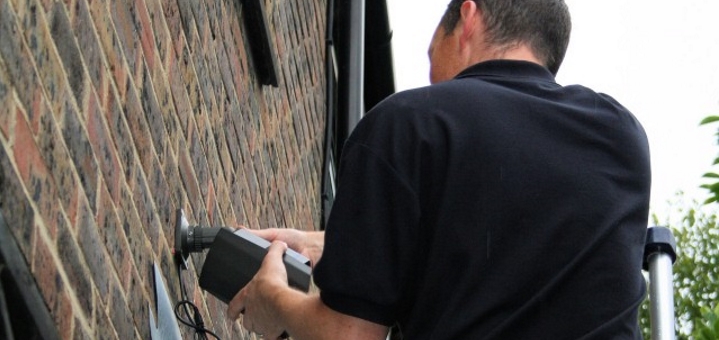How to deter and prevent squatters from accessing your property

Whether your property is a commercial or residential premises, as soon as it becomes vacant it’s at risk of trespass from squatters – those who enter and occupy properties without invitation and who, once settled in, can be particularly difficult to remove.
Although the UK law changed in 2012, making squatting in residential properties illegal, with squatters becoming punishable through imprisonment and hefty fines, residential properties still remain at risk, whilst the unauthorised occupation of vacant commercial properties has risen steeply. This is a largely because squatters know that commercial property is not yet subject to criminal court, but requires civil court action to achieve the eviction of squatters – a long and expensive process for commercial property owners.
For further reading covering what rights squatters have, check out the SafeSite Security Solutions guide.
Squatters – a matter of costs
The costs of removing squatters and making good the property after illegal occupation can be significant whether the property is residential or commercial. Costs are most commonly incurred as a result of:
- Property damage, both when squatters gain access through breaking in and through damage caused by vandalism or from squatters stripping the property of valuable materials such as metals or fixtures, which they commonly sell on. If you’re lucky, repairs required after evicting squatters may be limited to redecorating and cleaning, but realistically many property owners find themselves faced with expensive bills for full refurbishment.
- Squatters running up bills by accessing utilities which either haven’t been turned off, or which they illegally reconnect.
- Needing to clear rubbish, fly-tipping and debris associated with squatters and anti-social behaviour. This may include the high cost of specialist clearance, such as drug paraphernalia, or removal of asbestos which may have been exposed as squatters stripped out the property.
- Insurance costs increasing following claims after removing squatters.
- The court and legal fees payable as part of the eviction process.
What’s more, when squatting occurs in commercial properties or residential properties aimed for the rental market, lost revenue can be an additional and significant cost. And of course, the longer the property is out of action due to squatters, the greater the risk of long-term damage, and the more costly the situation can become.
With commercial properties now tending to be the main target and often being larger buildings, the extra number of squatters taking occupation can result in very large repair costs, even after a relatively short period of squatter occupation. So, overall, spending time and money to prevent squatters can prove far less costly than evicting and then having to make good at the property after them. So what can you do?
Squatters – a matter of timing
Whether a property is residential or commercial, and whether it’s likely to be vacant in the short or longer term, the ultimate way to prevent squatters is to actively deter them from entering the property in the first place. Whilst turning off utilities is always useful, making the property much less appealing to squatters can be achieved through a few simple actions.
Short-term solutions
- Keep the property looking occupied: If you can get a trusted temporary tenant or reliable property guardian to make the property look occupied by actually living in it, then do so. If not, ensure that post is redirected, to avoid that telltale pile on the doormat and decide whether to switch off utilities or use them to help you create the illusion of occupation (lights, radio on timers and motion-sensor lighting outside, etc.)
- Make regular checks: Stopping by regularly is always essential, whether you do it yourself or ask a trusted individual, such as a neighbour. Neighbours have a particular interest in ensuring that the property doesn’t become an anti-social hub, so they are often more than willing to help.
- Lock up securely: Locks should be carefully checked and doubled up with deadlocks and padlocks for additional security. If the property is in between tenants, change the locks once the previous tenants leave, as you really don’t know who else out there may have a key.
- Maintain a tidy exterior: Any outward signs of abandonment of neglect can add to the property’s appeal to squatters, so keeping outside areas well maintained is essential. Gateways and driveways should also be secured with padlocks, rather than with chains which could be cut away.
Prolonged protection
All of the above should also be implemented where possible, but there’s no question about keeping utilities going to run lights on timers – if the property’s going to be vacant for a prolonged period, then utilities should always be switched off and the following steps considered.
- Access points should be properly secured, ideally using steel screens as a solution – these offer both a highly visible deterrent and robust, tamper-proof protection in the event of attempted entry. All access points, including doors, windows and skylights, should be secured as the custom-fit nature of steel screening means that no access point needs to remain vulnerable to squatters.
- Visible alarms should be fitted. Alarms can be fully functional and monitored with very little additional effort, through using the services of a professional company. They can also be wireless, so there’s no problem with the utilities being turned off.
- CCTV monitoring offers both a visible deterrent and the benefit of immediate action in the event of problems. Monitored security increases the opportunity for prompt action in the event of trespass, particularly as the legal process for eviction has a quicker route if application to the court for removal of squatters is made within 28 days of identifying the unauthorised occupation.
- Consider adding barrier systems to boundary areas, as well as having visible monitoring and alarms fitted outside. Temporary installation of concrete barriers, for example, can prevent entry by vehicles, which not only reduces the risk of squatters but also of illegal fly-tipping and the costs involved with cleaning it up (which is always the responsibility of the landowner, when it comes to fly-tipping).
Of course, although protecting your vacant property may incur expense, some security features, such as steel screens and boundary systems, can be hired rather than purchased to help reduce overall costs.
However, it’s worth remembering that everything you do to deter and prevent squatters from accessing your property could prove to offer a significant saving compared to the costs you could be faced with if they succeed in getting in!










Excellent article offering very good advice on keeping an empty property secure and reducing the chance of an incident. There is a growing number of UK residents with a second home thats often left unoccupied for long periods.